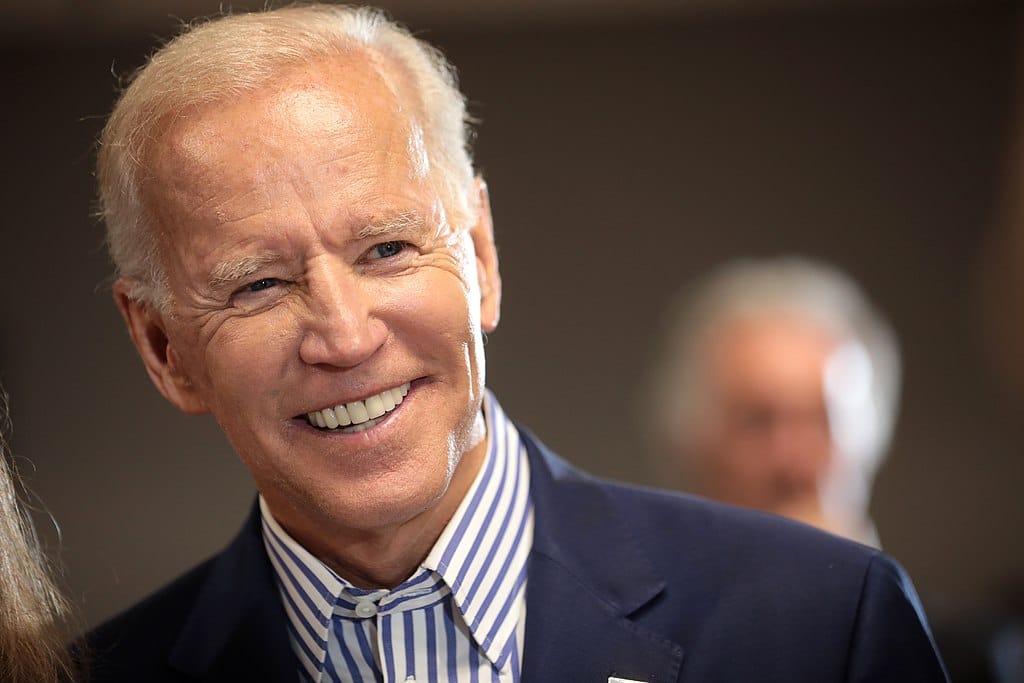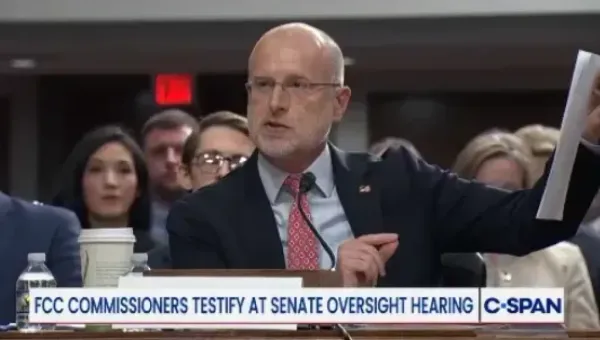Building Better Broadband Underscores Joe Biden’s Top Policy Initiatives
January 5, 2021 — The digital divide afflicting the United States has become even more apparent throughout the pandemic, repositioning the issue of universal broadband access to the forefront of many Washington policy agendas, including that of President-elect Joe Biden. The Biden presidential campa
Jericho Casper

January 5, 2021 — The digital divide afflicting the United States has become even more apparent throughout the pandemic, repositioning the issue of universal broadband access to the forefront of many Washington policy agendas, including that of President-elect Joe Biden.
The Biden presidential campaign’s website early on included a plan for rural America that highlighted how the COVID-19 crisis deepened many of the challenges that were already confronting Americans, including “lack of access to health care, unreliable broadband, and the chronic under funding of public schools.”
The plan further states that “Americans everywhere need universal, reliable, affordable, and high-speed internet to do their jobs, participate equally in remote school learning and stay connected” and promises to “expand broadband, or wireless broadband via 5G, to every American.”
Biden’s top four priorities convey an urgent need for advanced infrastructure
Of the challenges facing the incoming administration of Biden and Vice President-elect Kamala Harris, it seems clear that universal broadband is critical to each of them.
Biden’s campaign website specifically lists universal broadband as a priority in bolstering economic recovery, fighting climate change, and advancing racial economic equity. Universal access to broadband internet also underscores the fourth top policy initiative listed on the Biden campaign website, battling COVID-19, although the incoming administration fails to link broadband as a precondition for this priority.
As a presidential candidate, Biden called broadband a tool to put Americans to work during a visit to Hermantown, Minnesota.
The campaign’s plan for economic recovery specifically links the country’s financial recovery to mobilizing American work forces in the construction of “modern, sustainable infrastructure” and “sustainable engines of growth,” connecting universal broadband to building a clean energy economy, addressing the climate crisis, and creating millions of “good-paying, union jobs.”
Much of the Biden administration’s plan for universal broadband is tied to climate change initiatives. Biden’s climate change priorities website calls for building clean energy grids powered by broadband internet to lay “a new foundation for sustainable growth.”
Biden has promised that as president, he will make bold investments in American industry and innovation to ensure the vitality of American manufacturing is not a thing of the past. One way the President-elect could achieve this goal is by adapting his administration’s policy priorities to recognize the centrality of universal broadband access and adoption to each of them.
Broadband recognized as central to rural progress
The Biden and Harris campaign has repeatedly invoked the desire to launch a wide-ranging infrastructure package to jump start economic recovery. Early on, the campaign called for billions in federal grants to help connect rural areas to the internet as part of its ambitions.
Biden’s plan for increasing rural connectivity specifically references spending $20 billion in expanding rural broadband infrastructure, tripling funding for Community Connect broadband grants to expand access, and reforming the Lifeline program, which subsidizes internet and phone services for low-income Americans.
One way the President-elect could achieve this goal is by adapting his administration’s policy priorities to recognize the centrality of universal access and adoption to each of them.
Building better broadband underscores racial economic equity
Biden’s transition website recognizes that digital equity is at the core of achieving racial economic equity, a further priority of the administration. In his plan for racial equity, Biden pledges to invest $20 billion in digital infrastructure to support historically Black colleges and universities and other minority serving institutions.
Biden’s racial economic equity plan further calls for closing the digital divide at large, as the gulf between broadband internet haves-and-have nots has long impacted Black, Hispanic, tribal, and other historically marginalized households.
Biden’s racial economic equity plan directly ties a lack of proficiency in digital tech to having a hindrance on an individual’s opportunity for economic mobility.
Historically marginalized groups are less likely to have access to broadband internet. While 79 percent of white households have broadband internet, only 66 percent of Black households and 61 percent of Hispanic households do, according to research from the Pew Research Center. Further, only 52 percent of Native Americans who live on tribal land have a home broadband subscription.
Biden’s plan claims it will ensure that U.S. infrastructure investments work to address disparities in access to utilities such as clean water, accessible transportation, connectivity to high-speed internet, and more, “which often occur along lines of race and class.”
The “digital divide needs to be closed everywhere, from lower-income urban schools to rural America, to many older Americans as well as those living on tribal lands,” reads the plan. Biden’s racial economic equity plan claims marginalized groups will further benefit from the $20 billion he plans to invest in broadband infrastructure in rural America.
Better broadband is necessary in fighting COVID-19 and preparing for future pandemics
Research finding that American’s with high-speed internet were less likely to leave their homes after shelter-in-place orders went into effect, recently published by the National Bureau of Economic Research, reveals that universal access is at the core of battling COVID-19.
Researchers discovered that income is correlated with differences in the ability to stay at home, and further, that the unequal diffusion of high-speed internet in homes across regions drives much of the observed effect of income inequality.
The combination of having both high income and high-speed Internet appears to be the biggest driver of one’s propensity to stay at home. Therefore, the digital divide explains much about inequalities role in people’s ability to self-isolate.
So, what exactly is required to “Build Back Better”?
Based on the priorities listed on Biden’s transition website, efforts to construct a universal broadband internet infrastructure, train digital work forces of the future, and fuel the provision of resources and tools to encourage universal adoption of broadband, should be prime concerns of the president-to-be.
‘Universal broadband’ mentioned, but more specifics lacking
Still, the few mentions of broadband on the Biden-Harris transition website are largely lumped in with infrastructure generally and environmental action. Indeed, mention of the phrase “universal broadband” on Biden’s transition website ends there.
The Biden administration has made clear that its main priority is battling the ongoing coronavirus pandemic. Yet, the transition team’s website fails to recognize the significance of universal broadband to achieving this goal.
Although an $80 billion broadband infrastructure packages was originally proposed in the House Democrat’s COVID-19 relief bill, rhetoric surrounding a large infrastructure package of the sort has largely died down since the onslaught of the pandemic
Will ‘universal broadband’ claims amount to anything?
While the Biden administration has utilized the phrase ‘universal broadband’ in multiple policy plans and on more than one occasion, no concrete policy proposals have followed.
Critics have argued that, so far, Biden’s slim “universal broadband” statements differ little from outgoing President Donald Trump’s policies.
Based on a lack of tangible policy initiatives, it would be astute to remain cautiously optimistic about the efficacy of the Biden administration’s broadband plan.
Director of the community broadband networks initiative at the Institute for Local Self-Reliance Christopher Mitchell, displayed this cautious optimism in an interview with State Scoop, saying though the proposed policies are somewhat vague, “that broadband was mentioned in so many capacities is encouraging.”
“It wasn’t like there was just a section where it said ‘broadband is important,’” Mitchell said, “but there was a discussion about broadband’s role throughout — in terms of rural economic development, but also schools, and racial inequity. It takes seriously how important broadband is.”
Biden made more specific pledges in a series of meetings with the supporters of Democratic Party primary opponent Senator Bernie Sanders, D-Vermont, in July. During that time, Biden seemed to be in favor of giving federal money to support municipal broadband initiatives.
At the time, Biden restated his support for removing barriers to municipally-owned broadband networks, of which there are more than 331 in the U.S. today. About 22 states have outlawed municipal broadband outright, leaving residents with fewer alternatives to corporate internet service providers, which can create broadband “deserts,” or areas lacking in capacity.
Yet, the recommendations from the task force aren’t direct, actionable plans issued by Biden’s campaign.









Member discussion